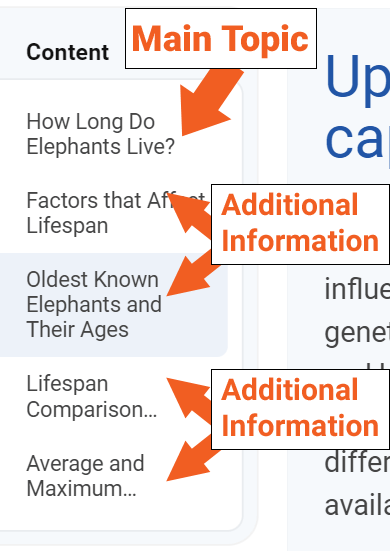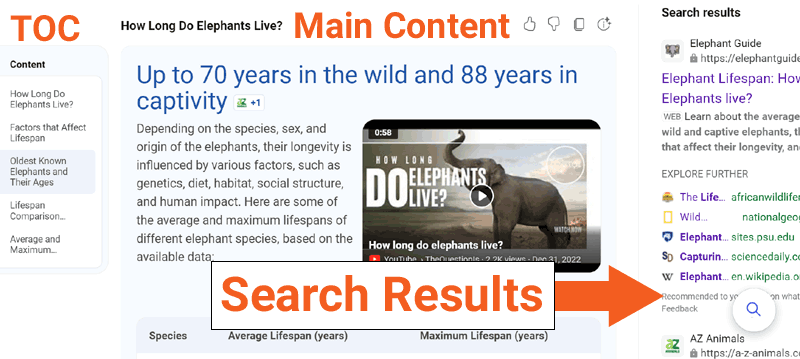

Last updated on

Bing is launching an updated version of its Generative Search that presents information in a more intuitive manner, fostering exploration while also emphasizing click-throughs from search results to websites.
Microsoft has unveiled their latest AI search iteration:
“Following the debut of LLM-powered chat responses on Bing in February of last year, we’ve been diligently advancing the evolution of search. …Today, we’re thrilled to offer a sneak peek at our new generative search experience, which is now being rolled out to a limited subset of user queries.”
Bing’s announcement highlights new features designed to enhance how users find information and interact with search results. The updated interface makes it easier to view organic search results and navigate through websites.
On the desktop version, Bing now displays three main panels:
Additional organic search results are visible below the main panel.
The table of contents on the left encourages exploration by presenting the main topic at the top and listing related subtopics below. This approach improves upon the “People Also Asked” format by inviting users to delve deeper and click on organic search results to further explore their interests.

This layout reflects Bing’s deliberate design choice to enhance and sustain user engagement with website links.
Below is a screenshot showcasing the new generative AI search experience. Notably, Bing integrates AI-generated answers alongside traditional organic search results, creating a more comprehensive search experience.

Bing emphasizes that they have thoroughly tested the new interface to ensure it maintains the same level of traffic to websites and avoids increasing the number of zero-click search results.
While other search engines often discuss search quality in terms of user satisfaction, Bing’s announcement highlights that maintaining traffic to websites was a key factor in designing the new layout.
Below is a screenshot of a typical Bing AI search result for a query about the lifespan of elephants. The areas highlighted with blue boxes represent AI-generated answers, while the content outside these boxes consists of organic search results.

The screenshot demonstrates a balance between organic search results and AI-generated answers. Additionally, there are search results on the right side (not visible in the screenshot above) that complement these findings.
Microsoft’s blog post elaborates:
“We are closely monitoring how generative search affects traffic to publishers. Initial data suggests that this approach preserves the number of clicks to websites and supports a robust web ecosystem. The generative search experience has been crafted to include traditional search results and increase clickable links, such as references in the results.”
Bing’s layout represents a significant shift from the zero-click formats seen in other search engines. By intentionally designing their generative AI layout to maintain website clicks, Bing’s approach underscores their commitment to a healthy web ecosystem.
A notable feature of Bing’s generative AI search is that it presents the answer to the primary question first and then anticipates related queries. This approach resembles the “information gain” technique, where an AI search assistant ranks an initial set of pages that address the search query, followed by subsequent sets of results that offer additional relevant information.
What sets Bing apart from the traditional Information Gain method is its integration of all these search results on a single page. Bing employs a table of contents on the left side to facilitate easy navigation, allowing users to quickly access additional AI-generated answers and organic search results.
Bing’s newly updated AI search engine layout is being gradually rolled out, with Microsoft closely monitoring user feedback. The company has conducted extensive testing and is confident that the new layout will continue to drive traffic to websites. Search engines and websites share a mutually beneficial relationship known as the web ecosystem. For this relationship to thrive, it must be built on mutual contribution—where both parties give and receive.
Other search engines could benefit from adopting Bing’s approach, which is designed to enhance user satisfaction while promoting exploration of the original content sources.
Original news from SearchEngineJournal